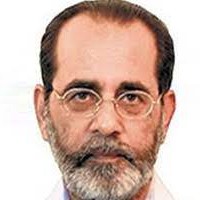NPT RevCon Ends in Failure
To mitigate the disappointment of failing to adopt a consensus final document, some die-hard believers were quick to claim that success need not be defined in terms of a final document. However, the hard reality is that growing differences among the major powers (the United States, China, and Russia) and between the five nuclear-weapons states and nonnuclear weapons states, are making the strains within the NPT increasingly visible.
The final straw was the inability to find language addressing the nuclear safety crisis at the Zaporizhzhia Nuclear Power Plant in Ukraine, under Russian occupation since March. However, even had this obstacle been overcome, other warning signs were numerous, and fifty-two years after entering into force, the compromises inherent in the fabric of the NPT need to be revisited. The NPT was originally packaged as a balance of nonproliferation, nuclear disarmament, and the peaceful use of nuclear science and energy, and, over the years, only the nonproliferation element has become stronger.
Political leadership was absent at the RevCon. All the nuclear-weapons states could manage was a reiteration of the 1985 Reagan-Gorbachev declaration that a nuclear war cannot be won and must never be fought. The statement remains valid but sounded hollow in the face of rising nuclear rhetoric and the continued pursuit by major powers of modernization plans for their nuclear arsenals.
The U.S.-Russia bilateral arms process is just holding, but the New START Treaty expires in 2026 and prospects for follow-on negotiations are bleak. China has studiously refrained from participating in any arms control talks with the United States, and that was before tensions between the two reached a new high given the recent Taiwan Straits crisis.
An uncomfortable political reality among the four nuclear-weapons states outside the NPT—India, Israel, North Korea, and Pakistan—is also palpable. How to work with these countries to achieve the NPT’s nuclear disarmament obligations remains a thorny issue.
When the NPT was negotiated in the 1960s, nuclear science and technology was still in its infancy. Today, neither the science nor the associated technology is as remote or esoteric. New developments in space and cyber technologies, missile defenses, development of hypersonic delivery systems and conventional prompt global strike capabilities are generating new complexities and blurring the dividing line between nuclear and conventional use on a battlefield. None of these issues was adequately addressed at the RevCon.
Unless the NPT states face these realities and generate the political will needed, the frailties of the NPT will take their inevitable toll.











